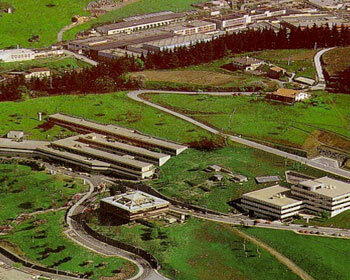Atty. Deb Olson developed and will moderated a panel at which founders and leaders of two very different social enterprises discuss what they have done and are doing to ensure that the successful social enterprises they built, Carris Reels and Zingerman's, will remain both successful businesses and social enterprises when their successors run the business. The panel will be April 9, 2014, at t the upcoming National Center for Employee Ownership annual conference in Atlanta, GA.Carris Reels, a company with 715 employees and 15 plants in 8 states, also known as the "Carris Corporate Community" is a manufacturer of all types of reels, headquartered in Rutland, VT. The business succession transition for Carris Reels started in 1993, when Bill Carris began to sell his family's interest in the company to their employees through an employee stock ownership plan (ESOP). Carris Reels is now owned 100% by the ESOP.Zingerman's, a business with 600 employees, best known for its world renowned deli in Ann Arbor, is actually a group of 8 (soon to be 9) cooperating businesses known as the "Zingerman's Community of Businesses", which was started by 2 partners, Ari Weinzweig and Paul Saginaw. It is now run by a group of 18 partners who manage the various businesses and make policy for the whole group. All the partners began as Zingerman's employees, and developed their Zingerman's businesses through the "Path to Partnership" with help from the founders. The partners group is now working through a business succession plan with the founding partners. While the exact form it will take is not yet determined, the group is interested in creating a co-op style of particpative worker ownership. Ron Mauer chairs the Zingerman's partners group.
Evergreen Cooperatives
Evergreen Cooperatives- Cleveland, OH
There are recent efforts in distressed inner cities in Cleveland, Milwaukee and Atlanta in which anchor institutions have collaborated with foundations to create worker-owned cooperatives, employing neighborhood people to serve the needs of anchor institutions such as hospitals and universities. The most developed of these is the Evergreen Cooperative group in Cleveland. The Democracy Collaborative consultants who have played a leading role in Cleveland are also working in Milwaukee and Atlanta. Their website (www.community-wealth.org) has information not only on their efforts, but on a wide array of other community wealth building efforts. The Democracy Collaborative’s Research Director, Steve Dubb, serves on the C2BE Board of Directors.
- High profile, top-down, foundation-led development process
- Organizers were the entrepreneurs - came up with the concepts, wrote business plans, got capital
- Organizers (Anchor Institutions and the Developers they hired) remain as majority board members for several years
- Hired workers as employees on track to become owners after 1 year (this is how most worker co-ops bring in new members once established)
- Workers were found through a local work readiness training center
- Hired an outside manager for each business to be replaced from within the workforce after 3 years
- Evergreen has a central organization that supports the existing co-ops and helps develop new ones; each co-op puts 10% of its profits into this organization
Mondragon Cooperative Corporation (MCC)
The Mondragon Cooperative Corporation (MCC) began 50 years ago when the Basques were on the losing side of the Spanish Civil War. Their capital city, Guernika, had been leveled by Franco and their language was banned. Their children were leaving. They had lived in the mountains around Mondragon for 1000 years. A Basque priest, who had studied the distributist teachings of the Catholic Church, began to teach classes on self-management of businesses and worked with the community to create an industrial school. The first five graduates of the industrial school, purchased some used equipment and started a stove company, which is now, Fagor, the 3rd largest producer of appliances in Europe.  Fagor started 14 years after the priest began his classes on self-management. Shortly thereafter they created a bank to help finance and to provide technical assistance to the various cooperative businesses in their group. The organizing drive to start their community bank was “savings or suitcases”. Fifty years later they have 85,000 people working in 120 companies with €38 billion of assets and annual revenue of €13 billion. Their industrial school is now an engineering and business university. Approximately 20,000 of those working in the co-ops are engineers. The co-ops jointly own second level co-ops that provide insurance, research and development and other services to the co-op companies that own them.
Fagor started 14 years after the priest began his classes on self-management. Shortly thereafter they created a bank to help finance and to provide technical assistance to the various cooperative businesses in their group. The organizing drive to start their community bank was “savings or suitcases”. Fifty years later they have 85,000 people working in 120 companies with €38 billion of assets and annual revenue of €13 billion. Their industrial school is now an engineering and business university. Approximately 20,000 of those working in the co-ops are engineers. The co-ops jointly own second level co-ops that provide insurance, research and development and other services to the co-op companies that own them.
Mondragon’s growth and development was strengthened by its comprehensive approach:
- 1941 Basque region of Spain - after capital bombed flat - Priest arrives teaching about independence through mutual self-reliance, self-managed businesses and continuous education
- 1943 created a technical school for area youth to learn work skills
- 1956 first 5 graduates of the school borrowed money from everyone in town to open the first business – making stoves. They purchased an existing plant and equipment from a nearby town.
- 1959 created, Caja Laboral, co-op development bank with savings from co-ops and community members
- 1959 Bank created an entrepreneurial division that provided R&D for all group businesses & hands-on lending
- 1974 created Ikerlan – Technology R&D center
- 1991 group of cooperatives incorporate as Mondragon Corporacion Cooperativa (MCC)
Emilia Romagna - cooperation between co-ops, family owned businesses and local government
Emilia Romagna is a diverse group of 8,000 cooperatives and family owned businesses that collaborate with each other in the Emilia Romagna region of Northern Italy. Their collaboration enables groups of small companies to jointly compete for large jobs that none of them could do alone. Their collaboration is aided by regional government supported business resource centers.
“Emilia Romagna came out of World War II as perhaps the most devastated region in Italy. Its strong cooperative and labor movements had been decimated by 25 years of Mussolini’s fascism that suppressed all independent organizations and jailed many co-op and union leader. Emilia Romagna ended up just behind the Nazi’s Gothic Line in 1943-45. It became the focus for Allied bombing, guerrilla warfare by the Resistance and Nazi reprisals against the civilian population. It emerged from the war impoverished with heavy unemployment.” John Logue, Economics, Cooperation and Employee Ownership, the Emilia Romagna Model http://dept.kent.edu/oeoc/oeoclibrary/emiliaromagnalong.htm
“The left-wing government in Emilia Romagna embarked on a strategy of promoting small business for economic development. It encouraged employee ownership, consumer cooperatives, and agricultural cooperatives, and it encouraged the development of cooperative institutions for all small businesses – co-ops and family owned firms alike.”John Logue, Economics, Cooperation and Employee Ownership, the Emilia Romagna Model http://dept.kent.edu/oeoc/oeoclibrary/emiliaromagnalong.htm
“The regional government’s economic development agency ERVET, created publicly funded small business ‘industrial sector service centers’ that have supported small business clustering in the region. They provide shared services in research and development, purchasing, education and training, workplace safety, technology transfer, marketing and distribution, exporting and more for scores or hundreds of small businesses in industrial sectors like ceramics, textiles, footwear, construction and agricultural machinery. These service centers combine the economies of scale with the advantages and flexibility of small business. They have supported the so called “flexible manufacturing” of the region in which small businesses in the same industry collaborate on joint bids for major contracts.” John Logue, Economics, Cooperation and Employee Ownership, the Emilia Romagna Model http://dept.kent.edu/oeoc/oeoclibrary/emiliaromagnalong.htmMajor firms supplied by these networks include Ferrari, Lamborghini, Maserati and Ducati. John Logue, Economics, Cooperation and Employee Ownership, the Emilia Romagna Model http://dept.kent.edu/oeoc/oeoclibrary/emiliaromagnalong.htm
Italy has a long cooperative history, and a number of laws that benefit co-ops including tax deductions for the funds they retain in collective reserves, and a requirement that co-ops contribute 3% percent of their annual profits to a co-op development fund run by one of the various co-op federations. John Logue, Economics, Cooperation and Employee Ownership, the Emilia Romagna Model http://dept.kent.edu/oeoc/oeoclibrary/emiliaromagnalong.htm
Unlike Mondragon – in Emilia Romagna multiple company types collaborate, including:
- Family owned
- Owned by communist cooperatives
- Owned by Catholic cooperative
- Owned by social democratic cooperatives
- Some cooperatives own publicly traded companies
Co-op federations include all sectors: workers, consumers, agricultural, and housing. Most companies are unionized. Coopitalia is a consumer co-op that is Italy’s largest retailer, comprised of 169 local retail co-ops and 4 million consumer members, though highly decentralized & democratic. Wal-Mart avoids Italy due to competition from Coopitalia.



